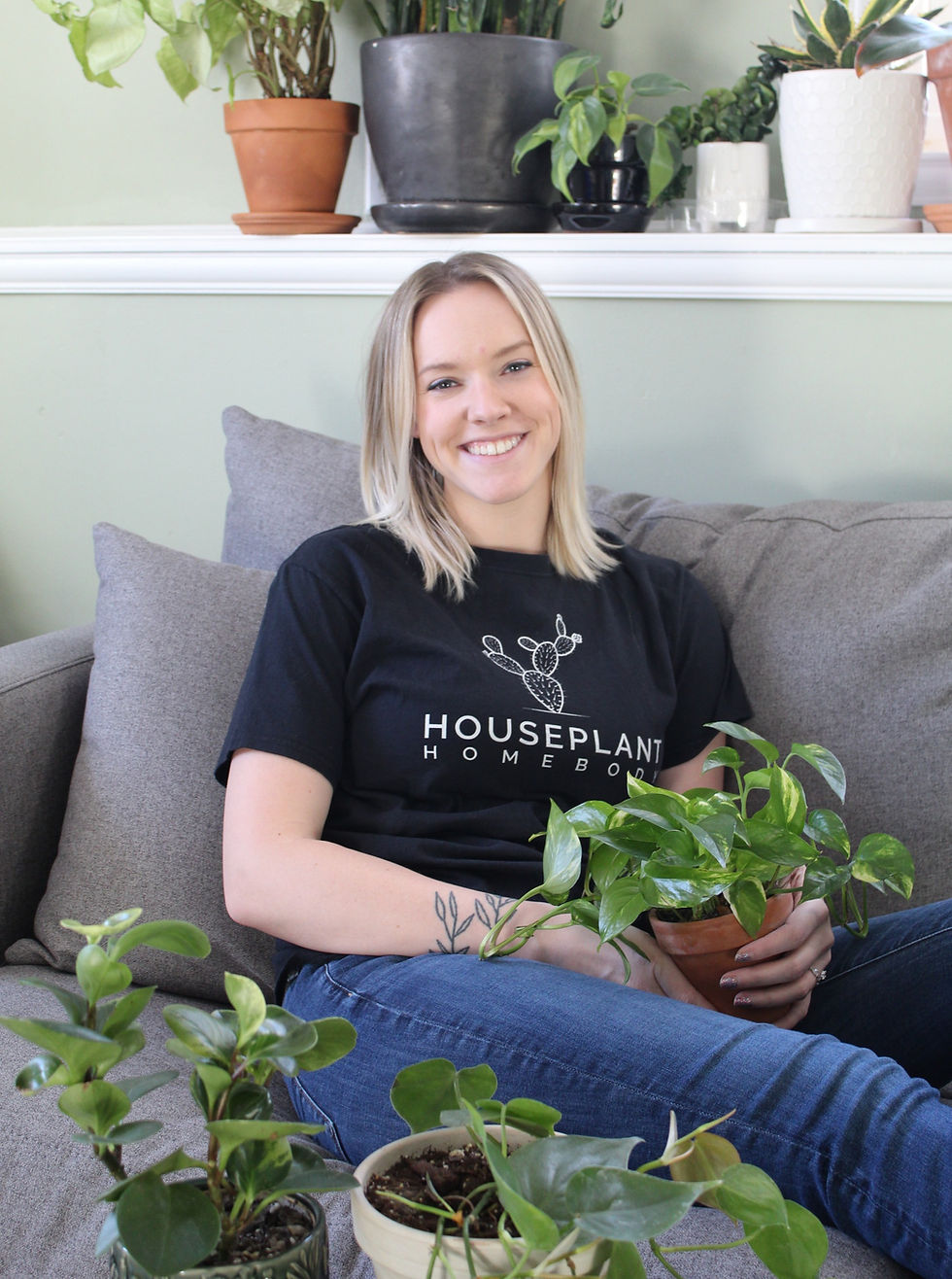Stromanthe Triostar- Plant Bio: Podcast Ep#45
- Owner: Holly Dz

- Oct 25, 2021
- 3 min read
This beautiful houseplant is considered medium to high maintenance but it's worth it! It has a some gorgeous pink, white and green variegation to it.

Varieties
Botanical Name: Stromanthe sanguinea
Common Name: Stromanthe Triostar, Stromanthe Tricolor
NOTE: The real cultivar name is Triostar but it is commonly called Tricolor.
Stromanthe Triostar is a specific cultivar and much more common than any of the other Stromanthe varieties. But here are some others to check out...
Stromanthe sanguinea: the original without any variegation
Stromanthe sanguinea 'Magic Star': Speckling pattern with variegation
Stromanthe stromanthoides: Only green foliage
Stromanthe stromanthoides 'Charlie': Green foliage with variegation

Sun Requirements
Bright, indirect light is best to keep the gorgeous foliage color. I have mine in a south window, but a west window would be great as well!
Water Requirement
The watering needs are very similar to Prayers Plants and Calathea. They need medium moisture which means never letting this plant dry out completely.
Extra humidity is very important for this plant as well. For a thriving Stromanthe Triostar, make sure you increase humidity as it works best for you. I have kept mine in a mini Ikea greenhouse but it's finally outgrowing it!
Fertilizer
As I always say, there are LOTS of ways to fertilize plants. Unless you are extremely over-fertilizing your plant, there isn't necessarily a wrong way to do this. I currently use Fox Farm's Grow Big Liquid Fertilizer and I fertilize every 2 weeks when I water my plants, starting around the end of February through October. I honestly probably only fertilize once or twice in winter because the plant isn't as active! I use about 1/2 to 3/4 the recommended amount of fertilizer because I would rather under-fertilize than over-fertilize my plants. Based on the below info from Fox Farm it looks like I could increase my fertilizing a bit if needed!
Other source
As you can see, there are MANY ways to fertilize and it is completely up to you! There are tons of products out there you can try but an overall rule of thumb for houseplants is that it is best to under-fertilize, rather than over-fertilize. Always use the recommended amount, or less, when applying your fertilizer to houseplants.

Propagation
Division is the best way to propagate this plant. I would wait until your plant is a little more mature and you see a separate clump of foliage you could cut or pull apart from the mother plant.
Other Facts
Part of the Marantaceae Family with other plants like the Prayer Plant, Ctenanthe, Calathea, Goeppertia
You can find these natively in rainforests within South America.
In nature, these plants can grow upwards of 5ft tall, but in your home they stay shorter. This plant doesn't get much taller than 2-3ft tall.
The Stromanthe produces red/pink flowers, but it is not likely inside your home.
Non-toxic to pets and humans. Check out Podcast Ep#31 for more info or the corresponding blog post!
Instagram Q&A
I asked followers if they had any specific plant questions I could address in this podcast and blog. Here are the questions and answers for the Stromanthe Triostar...
"How will I know when I need to repot my triostar? Anything to look for because it's doing great now."
The plant may not be retaining moisture as well and drying out faster.
If you can lift the plant out of the pot, check to see if the root system is vigorously around the outside of the soil.
It really depends on the size pot the plant is in, how long it's been in that pot and how big the plant is.
"All my stromanthe triostar leaves grow, droop, brown and die. Please help!"
I believe this has to do with the plant's moisture. When the soil dries out completely this can happen. Make sure the soil stays moist and it doesn't dry out between. Maybe getting a moisture meter reader would help you to understand when the plant needs to be watered.
"How large can these get?"
Typically indoors, you may see them getting upwards of 2-3ft tall and wide.
#stromanthe #stromanthetriostar #mediummaintenance #marantaceaefamily #propagation #crazyplantlady #ihaveathingwithplants #plantcommunity #urbanjungle #funfacts #podcast #houseplanthomebody #blog #helloplantlady #plantparenthood #fortheloveofplants #plantaddict #plantgang #plantsarefriends #thatplantlife #houseplantlove #tellyourplantfriend #houseplantblog #houseplantpodcast #plantssparkjoy #plantsmakepeoplehappy

WANT TO LISTEN?
Go to Apple Podcasts, Amazon, Spotify, Stitcher, Google Podcasts, and PodBean. Search for Houseplant Homebody to hear this episode and MANY more! You can also listen directly on my website under the Podcast page!
DON'T FORGET TO FOLLOW!
Stay connected on Instagram, Facebook, and Pinterest @houseplanthomebodyllc.
SAVE, COMMENT, LIKE, FOLLOW, SUBSCRIBE, and SHARE.
All your engagement on my podcasts, blogs, and social media posts help other plant lovers find me too!

Always written with extreme plant passion!
Love, Holly





Comments